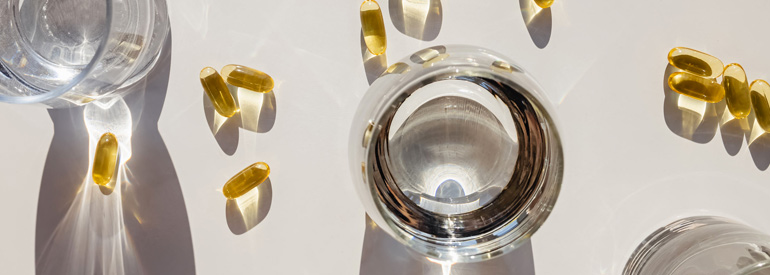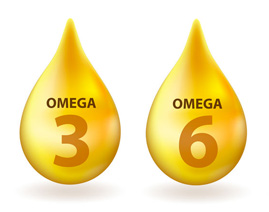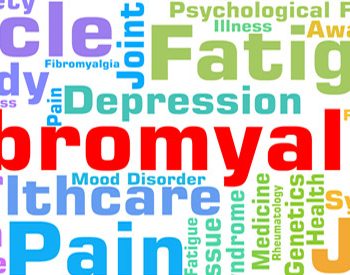
FATTY ACIDS SUPPLEMENTATION

The essentiality of fats
The 4th issue of the “Choice of supplement” column concerns fats, molecules necessary for our body without whom life would not exist. Based on their chemical structure, fatty acids are divided into two large families: saturated and unsaturated. As components necessary for the formation of the membranes of all cells, saturated fats confer stability, while unsaturated fats, with one or more folds (called unsaturation), confer fluidity and permeability. Some of them can be produced by the enzymatic systems of our body, others must necessarily be taken with the diet. In the latter case we speak of ESSENTIAL FATTY ACIDS.
Overall, the right balance of the lipid components allows the right assembly and, therefore, the natural functioning of the cell membrane and all the protein structures that it hosts.
A properly functioning cell membrane is essential for the proper functioning of the cells and tissues that make up the human body.
The nutritional requirement
All the international agencies that deal with health and nutrition (World Health Organization, European Food Safety Authority) recognize the need for an adequate intake of fats in the diet, so much so that, for some fatty acids, the daily requirement has been defined, even taking into account the individual’s age or condition:
- EPA and DHA 250mg / day in adults and from 2 to 18 years
- DHA 100mg / day for infants and children up to 2 years of age
- DHA 100-200mg / day during pregnancy and breastfeeding
- linoleic acid (LA): 10g per day
- alpha-linolenic acid (ALA): 2g per day
Fats in the stages of life
Infants, children, pregnant women and elderly people have a different physiological need for fatty acids related, on the one hand, to the need for growth and development, and on the other, to the reduced ability to produce fatty acids necessary for metabolism. In fact, during aging, the efficiency of the activity of the enzymes that our body uses to produce fatty acids is reduced, also due to the decreased intake and bioavailability of vitamins and minerals that support the enzymatic action.
The importance of fats is also evident in cases where their deficiency generates structural and functional dysfunctions – which go under the name of Essential fatty acid deficiency syndrome which manifest its selves with various types of clinical symptoms, from problems dermatological, behavioral disorders, anxiety, depression, fatigue and pain.
The Western diet, which is not very rich in fish, fruit and vegetables, determines reduced intake of essential fatty acids. This deficiency is accentuated by the difficulty in transforming the omega-3 precursors alpha-linolenic acid and omega-6 linoleic acid into long-chain fatty acids such as EPA, DHA, GLA which are therefore considered semi-essential.
Where can fatty acids be found? and where do you check its levels?
The cell membrane is the site of the organism that indicates the degree of balance between the families of fatty acids, helping us to identify imbalances and deficiencies as a result of incorrect food choices. Thanks to the Lipidomic Analysis of the membrane of the mature red blood cell (according to the accredited method MEM_LIP1 it is possible to know the quality and quantity of fats that our cells display to form their own membrane.
Supplements only when needed
 In the event of special physiological conditions (e.g. during pregnancy) or in conjunction with certain pathologies, it is necessary to intervene with the intake of fatty acid supplements, especially omega-6 and omega-3 to restore the physiological balance. The definition of INTEGRATOR itself is related to its action: “putting the levels in order” of a certain element.
In the event of special physiological conditions (e.g. during pregnancy) or in conjunction with certain pathologies, it is necessary to intervene with the intake of fatty acid supplements, especially omega-6 and omega-3 to restore the physiological balance. The definition of INTEGRATOR itself is related to its action: “putting the levels in order” of a certain element.
There are many questions that arise when we enter the pharmacy to buy a supplement: how to choose the most suitable? We have tried to answer this and other doubts in these articles:
Lipid supplements
In the case of lipid supplements, different formulations can be found on the market:
- fish oil
- triglycerides
- ethyl esters
- free fatty acids
- emulsions
When choosing the supplement, it is also necessary to take into consideration the quantity of the product that we actually absorb and which, therefore, becomes bioavailable to cell structures for incorporation into membranes. Very often, in fact, we are led to think that the supplement that has the most active ingredient is the best. Actually, it is more accurate to consider the real bioavailable percentage which depends on how similar the nutraceutical form is to the food that our digestive system is able to absorb and bio distribute.
Let’s take as a reference a study published by Jorn Dyerberg and colleagues [2] in which 72 individuals were divided into 6 groups each of which took omega-3 EPA and DHA in different preparations: ethyl esters, free fatty acids, triglycerides, fish, cod liver oil and placebo.
The authors reported the following bioavailability percentages calculated by measuring EPA and DHA in serum lipids:
- ethyl esters: 76%
- free fatty acids 86%
- triglycerides 134%
compared to 100% when consuming cod liver oil or fish oil.
From these data, the authors conclude that EPA and DHA in the form of triglycerides:
1) are much more bioavailable than ethyl esters probably because the latter are not naturally present in food;
2) are to be preferred as they are found in a more concentrated preparation than fish oil;
3) are, in reality, a mixture of mono-, di- and triglycerides and as such, better represent the type of fatty acids which, after a meal, come into contact with the membranes of the enterocytes (cells of the intestinal wall) of the small intestine where they are absorbed.
We will explore this last paragraph in the next issues of the Integrator’s Choice column.
Bibliographic references:
[1] Burr G.O., Burr M.M. (1929) “A New Deficiency Disease Produced by the Rigid Exclusion of Fat from the Diet” Journal of Biological Chemistry vol. 82, n. 345-367
[2] Dyerberg J, Madsen P, Møller JM, Aardestrup I, Schmidt EB, “Bioavailability of marine n-3 fatty acid formulations”, Prostaglandins Leukot Essent Fatty Acids. 2010 Sep;83(3):137-41.
Article by the editorial team of Lipinutragen
The information provided must in no way replace the direct relationship between health professional and patient
Foto: 123RF Archivio Fotografico: 154552593 : ©Diana Vyshniakova / 123rf.com ; 164949470 : ©bettystrange / 123rf.com
- On 31 May 2021



